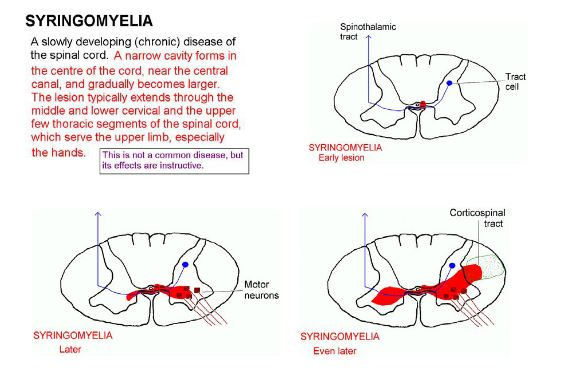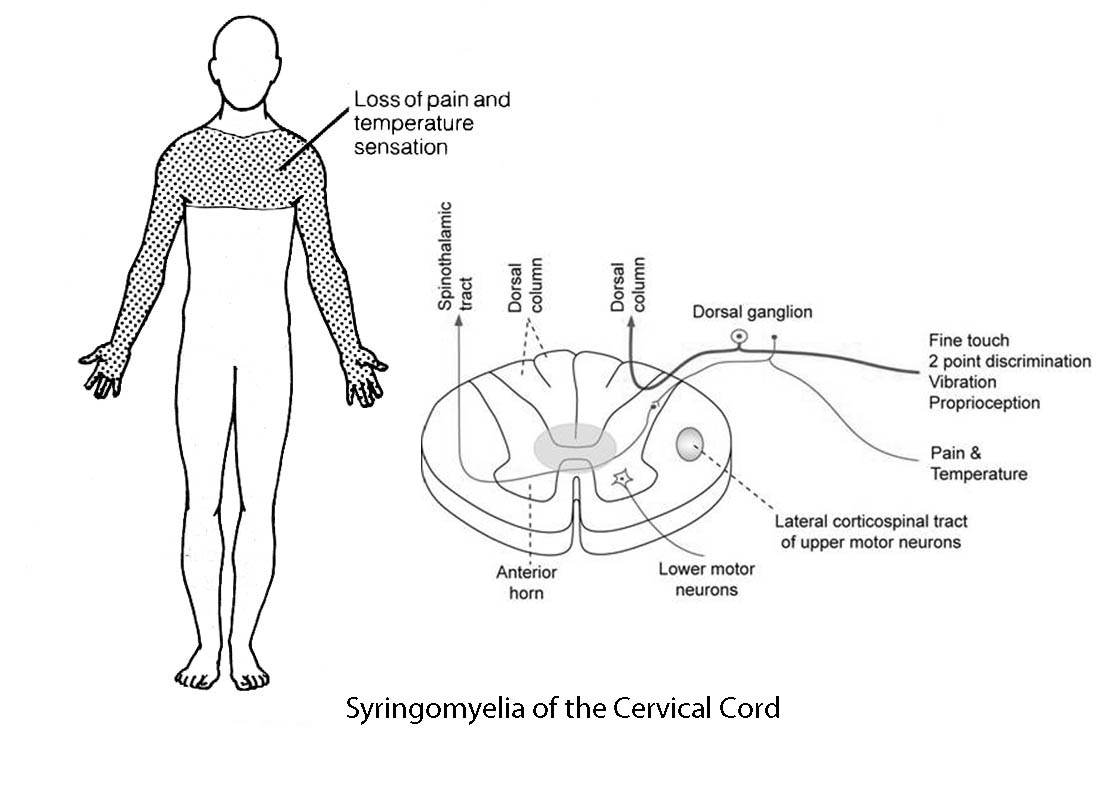Syringomyelia: Pathological Expansion of the Central Canal of the Spinal Cord because of a Syrinx
Syringomyelia is a disorder in which a cyst, called a syrinx, forms around the central canal of the spinal cord. This usually expands in all directions and destroys the centre of the cord, and may expand into adjacent areas such as the ventral horns and lateral columns. Each patient experiences a different combination of symptoms.The damage caused by the syrinx gives rise to pain, weakness, and stiffness in the back, shoulders, arms, or legs. Other symptoms may include headaches and a loss of the ability to feel extremes of hot or cold, especially in the hands. In most cases, the disorder is related to a congenital abnormality called a Chiari I malformation which occurs in the brain during foetal development. The condition usually progresses very slowly, possibly over many years.
|
 Syringomyelia usually affects the cervical region.
Syringomyelia usually affects the cervical region.
Syringomyelia may be precipitated by trauma, infection, bleeding or neoplasia. Symptoms may appear months or years after the trigger, and give rise to pain, weakness, and sensory impairment originating at the site of trauma. Sudden exacerbations can occur and are thought to be caused by rupture of the syrinx because of raised venous pressure, as seen in sneezing or violent coughing. |

 PD wiki.jpg)